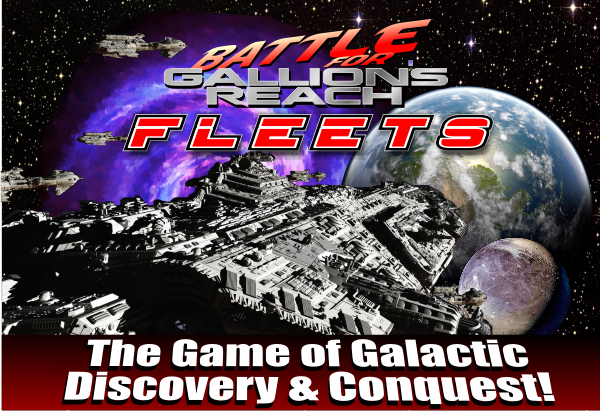While we are getting BattleForce Saturn reviewed and Battle for Gallion's Reach: Fleets! polished into it's final, streamlined form, we are pushing ahead with the Star Fleet Admirals game concept.
A GAME I WANT TO PLAY
This is a game I've wanted to play for a very, very long time. I grew up on war games and love them, but so many of them are incredibly complex and time consuming., it is hard to find the time anymore to sit down, learn and play one. My favorite war games always involved strategy of some type but there were few, if any, science fiction-based strategy war games available that weren't so complicated and time-consuming that it took weeks to learn the rules and days to play one.
But lately, I have been playing newer war games designed to eliminate the complexity and time to play and still provide the enjoyment. One such game, Memoir 44, is especially fun with quite simple rules (that can be made more complex by after-market add-ons to the game) and relatively short playing times (2 hours max). That allows me to also have a life and still enjoy this particularly fun hobby. I wish there were more such games, but it seems that either they are too complex or too ridiculously simple.
Memoir '44 game
When it comes to a war game, I want to be able to enjoy the flavor of leading armies into battle without so much detail that the "game" gets lost. Rules should not overpower the "game". I also wanted to play a strategy game that simulated interstellar warfare on a strategic level. Finding no such game on the market that had both qualities, I realized that if ever wanted to be able to play it, I'd better create it!!!
STAR FLEET ADMIRALS
STAR FLEET ADMIRALS is that game.
I wanted seven things that the game must have:
1) Simplistic, straight-forward play and yet enough detail to keep it interesting.
2) Streamlined way of simulating command and control at the "Operational" level (as opposed to Grand Strategic or Tactical) scope of play (D-Day would be "operational" versus the entire war in Europe as Grand Strategic and individual tank battles as Tactical).
3) Abstracted and yet interesting ship and ground combat
4) An interesting and challenging movement/command/supply mechanic
5) Quick pacing
6) Plenty of options for strategy planning but with some randomness and simplicity involved.
7) A genuine "war game" without economics or technology research getting in the way. Just pure strategy.
In essence, I wanted a game I could feel was detailed and meaty but was in fact rather simple and streamlined. Something between RISK (simple) and World In Flames (incredibly complex) , for example.Rather than creating just another move-and-shoot war game, I wanted to force players to make tough choices and consider things like supply lines, defending critical assets, power projection within a battlefield, economy of force, and achieving a clear and narrow victory condition or set of conditions. It would have to be a 2-player game, as any more players would severely complicate play and extend play time.
In STARFLEET ADMIRALS, players take on the roles of Supreme Commanders for both sides with a pool of admirals under their command.
Admirals
The heart of the game is the unique command and control mechanic that involves actual admiral characters. All admirals start the game in different ranks and have two values that change with promotion to a higher rank - Command and Initiative. The board comes with three delineated sections or "fronts" that require an admiral to command anything in it. Admirals are also required to move and fight with Fleets.
Fleet Admirals are always of a lower rank than
Front Admirals. Front Admirals use their C
ommand Rating, while Fleet Admirals use their
Initiative Rating. So all admirals have only 2 values. This keep things simple.
Some admirals can advance through four ranks to the very top, but in many cases, their values change as they are advanced. Some are better are lower ranks and others shine at higher. Some are better suited to Fleet command while others are better in managing an entire Front. Each admiral has a specific name and a picture so that players get the bonus of immersion. Lower-ranked admirals cannot command higher-ranked ones, so sometimes players will have to settle for less-than-optimal admirals in front command so the better ones can lead a fleet, etc. Thus is the nature being a supreme commander. Just ask President Lincoln how tough an assignment that can be!
Fleets do not move without an admiral in command of the fleet. Nothing moves or is done in a Front without a Front Admiral in command. So admirals make the game actually "play". Admirals can also be killed or wounded if the fleet they were commanding is destroyed in battle, and while there may be up to 20 admiral on each side, there are only a few on each side that are really exceptional!
Players may also choose to demote an admiral, but doing so can cause a loss of victory points - reflecting the political consequences of demoting popular commanders!
Next blog I will cover the game board and movement mechanics! :-)












